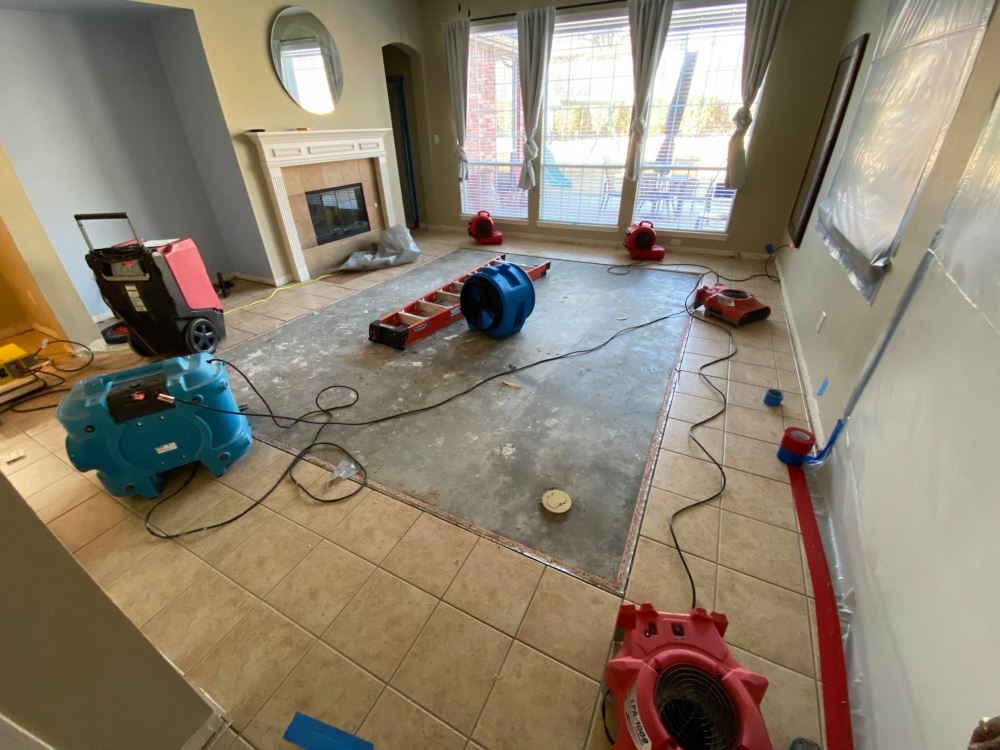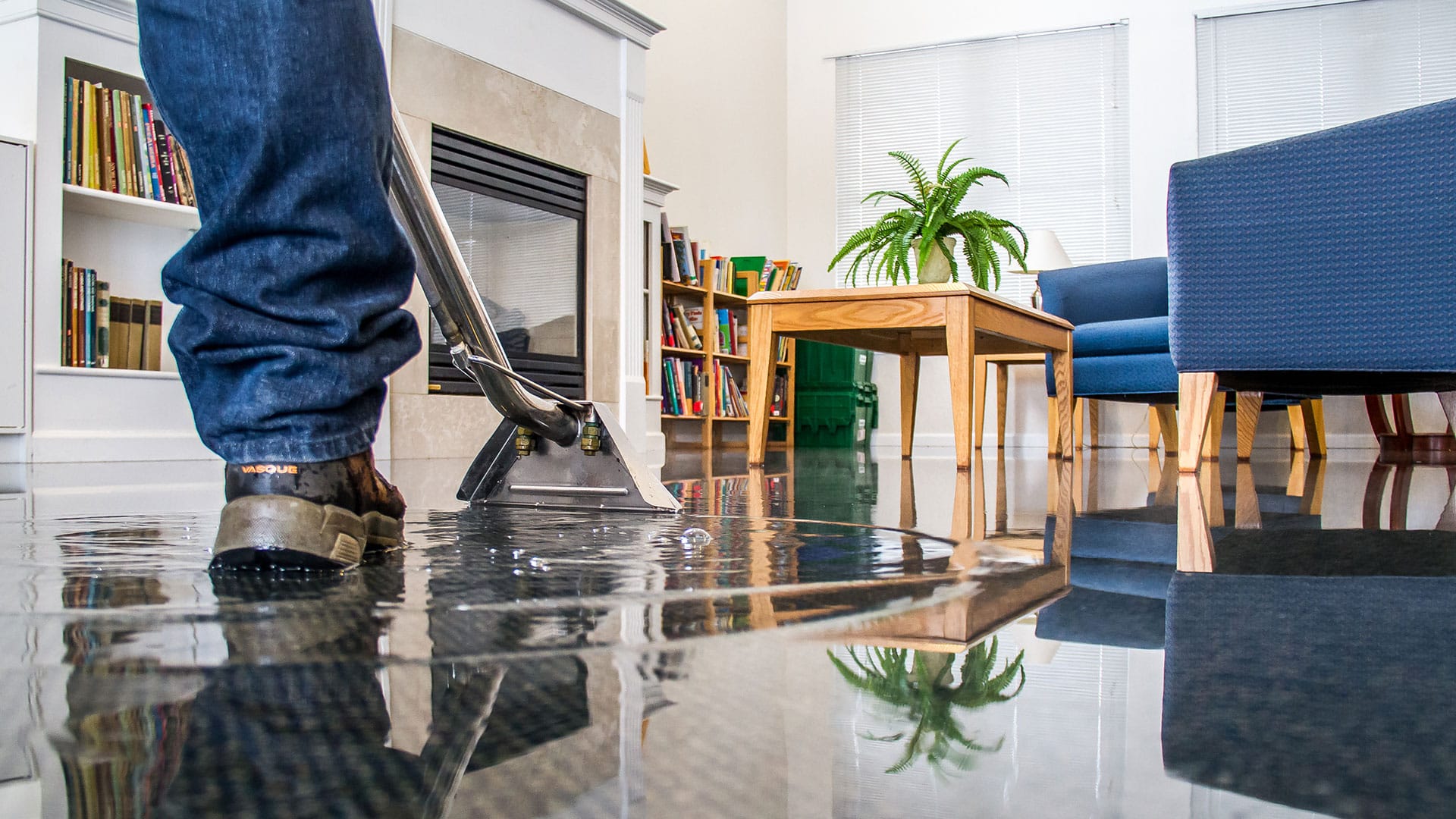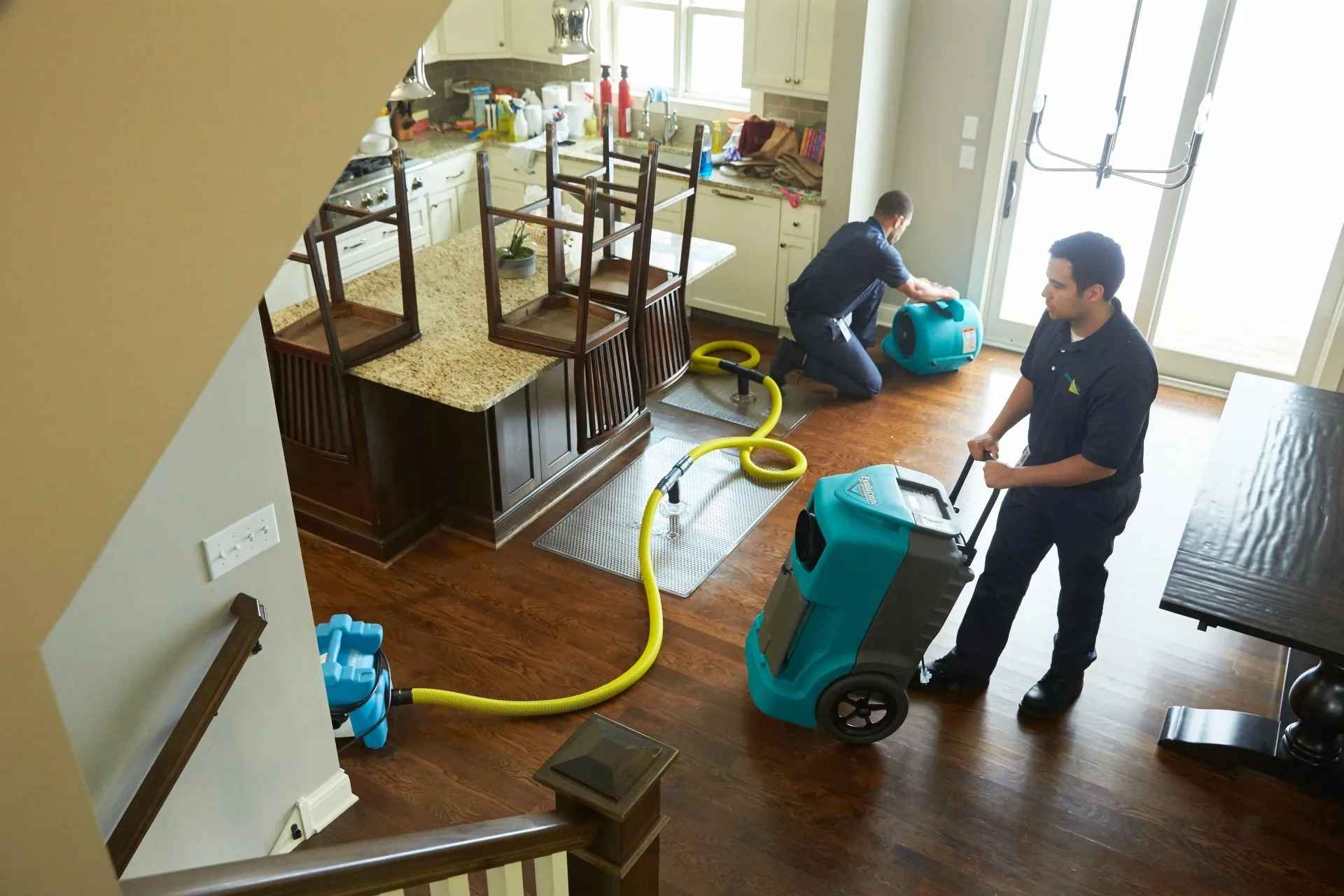Water Damage Restoration 101: Understanding the Process and Price
Water damage can strike suddenly, leaving property owners in a state of complication. Recognizing the reconstruction process is essential for efficient recovery. From examining the damage to picking the ideal company, each step impacts the general outcome and expense. Variables such as the sort of water damage and necessity likewise play a significant duty. What are the particular strategies used in repair, and just how can one prepare for prospective expenditures?
Sorts Of Water Damage

First Analysis and Examination

Water Extraction Strategies
Adhering to the preliminary assessment, efficient water extraction strategies are used to alleviate damage and protect against further issues. These techniques include using specific equipment such as industrial-grade vacuum cleaners and submersible pumps - Water Damage Restoration. The choice of approach depends on the volume of water present and the type of products influenced. For standing water, completely submersible pumps are commonly utilized for quick removal, while vacuums are perfect for extracting water from carpets and furniture. Furthermore, progressed techniques like water extraction floor coverings might be utilized for hard-to-reach areas - Water Damage Restoration. The goal is to get rid of as much water as feasible, reducing the possibility for mold and mildew growth and structural damage. Motivate and efficient water extraction is necessary in the total water damage restoration process
Drying and Dehumidification Process
When the water extraction is full, the drying out and dehumidification procedure ends up being vital to restoring the affected location. This phase typically utilizes industrial-grade dehumidifiers and air moving companies to efficiently lower wetness degrees. The dehumidifiers attract damp air, removing excess humidity, while air moving companies flow air to increase evaporation. Surveillance equipment is typically utilized to track humidity and temperature degrees, guaranteeing excellent drying conditions. The duration of this procedure can vary depending upon the level of the water damage and ecological elements. It is necessary to extensively completely dry all affected materials, including walls, flooring, and furnishings, to avoid mold growth and structural damage. Appropriate implementation of this action is critical for a successful restoration end result.
Cleaning and Disinfecting Damaged Areas
When the drying process is total, an extensive initial analysis and evaluation of influenced locations is crucial to recognize contamination degrees. Effective cleaning strategies and proper items should after that be employed to eliminate debris and spots. Ultimately, sanitization and sanitation methods are important to assure that harmful pathogens are gotten rid of, restoring the area to a safe problem
Preliminary Assessment and Examination
Before starting any type of repair efforts, a complete preliminary analysis and inspection of the affected areas are crucial for reliable cleansing and sanitizing. This process includes determining the level of water damage, establishing the source of the water breach, and assessing the products impacted. Assessors usually search for indicators of mold and mildew growth, structural honesty issues, and harmed belongings. The evaluation additionally includes inspecting wetness degrees making use of customized tools to assure no surprise water pockets continue to be, as these can lead to further complications. Recording the findings is essential for preparing the following action in the remediation process. A detailed preliminary assessment allows remediation professionals to develop a targeted approach for efficient cleansing and sanitizing, ultimately decreasing damage and wellness risks.
Cleaning Up Strategies and Products
Reliable cleaning and sterilizing of water-damaged areas require a selection of items and techniques tailored to the particular materials affected. For permeable surface areas like drywall and carpets, removal approaches are crucial to remove excess wetness, adhered to by deep cleaning with specialized cleaning agents. Non-porous materials such as tile or steel can be cleaned making use of commercial-grade cleansers that effectively get rid of contaminants. Steam cleansing is an additional reliable strategy, especially for carpets and furniture, as it utilizes heats to eliminate bacteria and mold and mildew (Flood Cleanup Services). Furthermore, environmentally friendly products are significantly popular for their safety and efficiency - Water Damage Restoration. Ultimately, selecting the ideal cleansing methods and products not only ensures instant tidiness yet likewise aids in stopping additional damage and health and wellness dangers connected with water invasion
Sanitization and Disinfection Techniques
When addressing water damage, correct sanitization and disinfection approaches are vital to guarantee the safety and health and wellness of the damaged setting. After first cleaning, surface areas should be treated with ideal disinfectants to get rid of pathogens, mold and mildew, and bacteria that prosper in moist problems. Common techniques include the usage of EPA-approved chemical disinfectants, which can be used through splashing or cleaning methods. In addition, ultraviolet (UV) light systems can properly sanitize locations by neutralizing bacteria without rough chemicals. The choice of method usually depends on the kind of products affected and the degree of contamination. Inevitably, detailed sanitization not only recovers a safe space yet additionally helps stop future wellness risks associated with lingering moisture and mold and mildew development.

Fixings and Restoration Options
Reviewing the damage triggered by check this water exposure is crucial for establishing the ideal repair work and reconstruction options. Property owners may deal with different concerns, consisting of harmed drywall, deformed flooring, and compromised structural components. Relying on the degree of the damage, repair work might include changing areas of drywall, mounting brand-new floor covering, or enhancing structural beams. In instances of extreme damage, full replacement of damaged products could be needed. Additionally, expert restorers typically recommend using dampness meters to analyze surprise moisture levels prior to making a decision on the best program of action. It is very important to act immediately to stop mold growth and further wear and tear. Selecting the best options not only brings back the property but likewise guarantees long-lasting safety and security and performance.
Elements Affecting Restoration Expenses

The level of water damage directly influences the remediation costs home owners can expect to sustain. Factors such as the resource of the water, the period of exposure, and the afflicted products greatly influence rates. For circumstances, tidy water damage from a broken pipe is typically much less costly to bring back contrasted to damage triggered by sewer. In addition, the level of contamination determines the need for specialized cleaning and disposal services, better enhancing costs. Geographical area also plays a function, as local labor rates and accessibility of restoration services can vary. The urgency of the reaction affects costs; quicker interventions generally lead to reduce overall expenditures by preventing additional damage. Recognizing these variables is essential for home owners when approximating reconstruction expenses.
The 3 key kinds of water damage are classified based on contamination degrees: clean water, gray water, and black water. A thorough initial analysis and examination are crucial steps in the water damage remediation process. For standing water, completely submersible pumps are commonly used for fast removal, while vacuums are excellent for drawing out water from carpetings and upholstery. The extent of water damage straight influences the repair sets you back home owners can expect to sustain. Clean water damage from a broken pipe is typically less pricey to restore compared to damage caused by sewer.